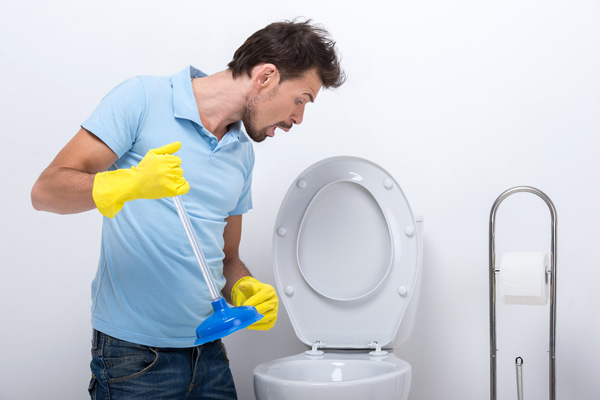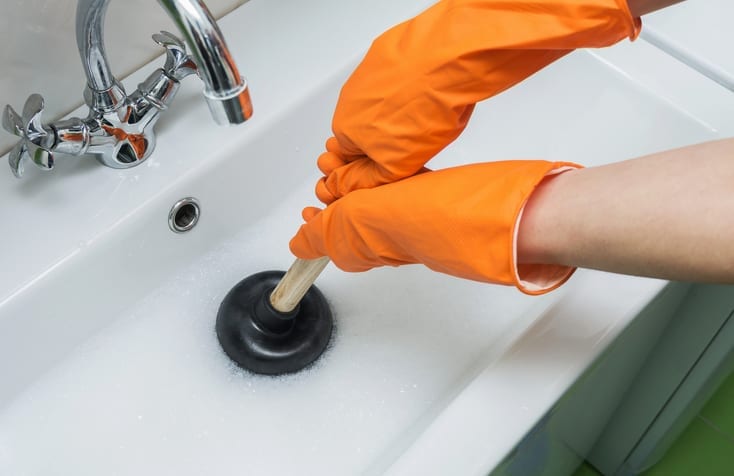Mastering Plungers and Drain Cleaner: Essential Tips
Mastering Plungers and Drain Cleaner: Essential Tips
Blog Article
This post below on the subject of A Guide to Plungers (and How to Use Them) is especially enlightening. Have a go and make your own assumptions.

Intro
Proper upkeep of family drains is crucial for protecting against clogs and ensuring smooth water circulation. Among the key devices in every property owner's toolkit is the plunger, along with various drainpipe cleaners designed to deal with persistent obstructions properly. This short article checks out how to make use of bettors and drain cleansers effectively to maintain your drains pipes flowing freely.
Section 1: Understanding Bettors
Types of Plungers
There are several sorts of plungers readily available, each created for different sorts of drains and obstructs. One of the most typical kinds consist of cup bettors, flange bettors, and accordion plungers.
Exactly How Plungers Work
Bettors work with the principle of producing stress and suction to dislodge obstructions. When properly applied over a drain, they develop a vacuum that can take out debris or break up obstructions.
Picking the Right Plunger
Picking the right plunger relies on the type of drain and the nature of the blockage. Mug plungers are ideal for sinks and bathtubs, while flange plungers are better fit for toilets due to their style.
Common Mistakes with Plungers
Staying clear of these mistakes makes certain reliable plunging: improper seal around the drainpipe, insufficient force, and not clearing surrounding debris.
Area 2: Utilizing Plungers Effectively
Prep work
Before diving, make sure the plunger covers the drainpipe entirely and creates a tight seal. Clear any type of noticeable particles around the drainpipe opening.
Strategy
Start with mild plunging motions to develop suction. Increase stress slowly, using a consistent rhythm. Repeat as needed until the drain removes.
Troubleshooting Tips
If diving does not function, try adjusting the seal, applying oil jelly for a far better seal, or using a various type of plunger.
Area 3: Understanding Drain Cleaning Company
Kinds Of Drainpipe Cleaners
Drain pipes cleansers can be chemical or chemical. Chemical cleaners make use of strong chemicals to dissolve blockages, while enzymatic cleaners use all-natural enzymes to break down organic matter.
How Drainpipe Cleansers Job
Chemical cleaners respond with obstructions to liquify them, while chemical cleaners break down natural materials like hair and grease without damaging pipelines.
Safety and security Factors to consider
Constantly put on gloves and eye protection when utilizing chemical drainpipe cleansers. Make certain appropriate ventilation and adhere to supplier directions thoroughly.
Eco-Friendly Alternatives
Think about utilizing vinegar and baking soft drink or enzyme-based cleaners for environmentally friendly choices that are much safer for pipes and the setting.
Area 4: Making Use Of Drainpipe Cleaning Company Successfully
Application Strategies
Pour chemical cleansers straight right into the drain opening. Permit them to work for the suggested time prior to purging with warm water. Chemical cleansers should sit overnight.
Preventative measures
Avoid blending different types of cleaners, as this can generate harmful fumes. Never ever make use of chemical cleansers together with a plunger, as splashing can happen.
Dealing With Persistent Clogs
For consistent clogs, consider making use of a plumbing snake or calling a professional plumbing to stop damages to pipelines.
Final thought
To conclude, comprehending just how to use bettors and drain cleaners successfully is essential for preserving healthy plumbing systems. By choosing the right tools and strategies, home owners can take on small blockages and avoid significant pipes issues down the line.
How To Properly Use A Plumbing Snake To Clear Drains
When any drain clogs in our home arise, we tend to gravitate toward the plunger and little else. In cases where the plunger and its vacuum-created pressure are not able to clear clogs, many immediately move to harmful chemicals or simply call their plumber to fix the issue.
we’re happy to help with all drain cleaning needs and concerns. This includes informing you on a few other home remedies you may have at your disposal for minor to moderate clogs, one of which is the use of a plumbing snake. Many people have never used one of these before – let’s go over the steps to take when your drain clogs and you have a plumbing snake available.
Attempt Plunger Use
The first step here, as we noted above, should indeed be to grab your plunger when you notice a drain clog and attempt to resolve it this way. If you’re unsure how to use a particular type of plunger, our plumbers can answer any questions you have. If this doesn’t do the trick, however, you move on to the snake.
Locate And Prepare Snake
A plumbing snake is a metal or plastic device that’s generally about a quarter of an inch thick. It’s design with significant extensions, meant to reach down into your clogged drain and push the clog out. Snakes also contain drain augers that will latch onto and push stubborn blockages.
If your plunger doesn’t clear a clog, locate your snake and bring it to the drain in question. We also recommend keeping a bucket nearby to collect the clog once you pull it out, plus we’d advise wearing goggles and possibly protective gloves.
Feed Snake
Once you’re ready to go, feed the snake slowly down the drain, using the crank device it comes with to keep it moving until it finds the clog. Once this happens, much of the clog will be latched onto the coil so you can pull it out, while the rest will simply break up and flow downward.
Detach Debris
Remove the snake slowly from the drain, and once you’ve done so, pick off any debris that’s stuck to the coil. This is another area where wearing gloves is a must.
Flush Drain
Finally, take a few minutes to ensure the snake has done its job correctly. If you’ve been using it on a toilet, flush the toilet a couple times and make sure everything flows well. If you’ve used it on a different drain, flush it with some room temperature water.
https://www.mybuddytheplumber.com/blog/how-to-properly-use-a-plumbing-snake-to-clear-drains/

Application Strategies
Pour chemical cleansers straight right into the drain opening. Permit them to work for the suggested time prior to purging with warm water. Chemical cleansers should sit overnight.
Preventative measures
Avoid blending different types of cleaners, as this can generate harmful fumes. Never ever make use of chemical cleansers together with a plunger, as splashing can happen.
Dealing With Persistent Clogs
For consistent clogs, consider making use of a plumbing snake or calling a professional plumbing to stop damages to pipelines.
Final thought
To conclude, comprehending just how to use bettors and drain cleaners successfully is essential for preserving healthy plumbing systems. By choosing the right tools and strategies, home owners can take on small blockages and avoid significant pipes issues down the line.
How To Properly Use A Plumbing Snake To Clear Drains
When any drain clogs in our home arise, we tend to gravitate toward the plunger and little else. In cases where the plunger and its vacuum-created pressure are not able to clear clogs, many immediately move to harmful chemicals or simply call their plumber to fix the issue.
we’re happy to help with all drain cleaning needs and concerns. This includes informing you on a few other home remedies you may have at your disposal for minor to moderate clogs, one of which is the use of a plumbing snake. Many people have never used one of these before – let’s go over the steps to take when your drain clogs and you have a plumbing snake available.
Attempt Plunger Use
The first step here, as we noted above, should indeed be to grab your plunger when you notice a drain clog and attempt to resolve it this way. If you’re unsure how to use a particular type of plunger, our plumbers can answer any questions you have. If this doesn’t do the trick, however, you move on to the snake.
Locate And Prepare Snake
A plumbing snake is a metal or plastic device that’s generally about a quarter of an inch thick. It’s design with significant extensions, meant to reach down into your clogged drain and push the clog out. Snakes also contain drain augers that will latch onto and push stubborn blockages.
If your plunger doesn’t clear a clog, locate your snake and bring it to the drain in question. We also recommend keeping a bucket nearby to collect the clog once you pull it out, plus we’d advise wearing goggles and possibly protective gloves.
Feed Snake
Once you’re ready to go, feed the snake slowly down the drain, using the crank device it comes with to keep it moving until it finds the clog. Once this happens, much of the clog will be latched onto the coil so you can pull it out, while the rest will simply break up and flow downward.
Detach Debris
Remove the snake slowly from the drain, and once you’ve done so, pick off any debris that’s stuck to the coil. This is another area where wearing gloves is a must.
Flush Drain
Finally, take a few minutes to ensure the snake has done its job correctly. If you’ve been using it on a toilet, flush the toilet a couple times and make sure everything flows well. If you’ve used it on a different drain, flush it with some room temperature water.
https://www.mybuddytheplumber.com/blog/how-to-properly-use-a-plumbing-snake-to-clear-drains/

Hopefully you enjoyed reading our section about How to Use a Plunger to Unclog a Toilet or Drain. Thank you for finding the time to read our article post. Loved our post? Please share it. Help other people discover it. I praise you for your time. Kindly check up our website back soon.
Explore Now Report this page